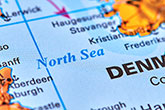Dieselising Europe: Part 1
Since 2000, European demand for diesel has been steadily growing while demand for gasoline has decreased. According to a report published by the European Petroleum Industry Association (EUROPIA), diesel demand in the EU increased from approximately 100 million tpy in 1990 to almost 190 million tpy in 2013. By contrast, gasoline demand decreased from a high of 130 million tpy to 80 million tpy over the same time period, representing a change in the gasoline/diesel demand ratio from 2:1 in 1990 to a projected 1:3 in 2030.
The reasons for inflated diesel demand are varied: tax breaks in many EU member states, a rise in the volume of commercial transport activity and better fuel efficiency have all played a part. As a result, lower gasoline consumption means that in order to stay afloat, European refiners have had to adapt their runs to a new demand structure. Contrary to popular belief however, these changes do not need to mean endless closures: by adapting their strategy, investing carefully in infrastructure and monitoring costs closely, there is no reason why the diesel boom has to spell the end for Europe's more mature refiners.
Europe and global trade
Based on the premise that diesel is less environmentally damaging, a favourable EU tax policy has meant that diesel is cheaper to buy than gasoline. Whether the environment really does benefit from diesel as opposed to gasoline is debatable, but the policy has undoubtedly fueled a dramatic increase in the volume of diesel run cars. PetroMatrix, a trade advisory company, claims that diesel saturation in France and Spain has almost reached 80%. Despite the decrease in the total number of cars (regardless of the type of engine) sold across the EU over recent years, various car scrapping initiatives have meant that older cars which ran on gasoline have now been outstripped by newer diesel ones.
Decreasing overall sales of personal vehicles in the EU have also done little to stem global diesel demand. According to a report by ExxonMobil published in early 2013, personal vehicle ownership in Asia is expected to rocket to 500 million by 2040, meaning that global demand for motor diesel is unlikely to subside. However, personal vehicles do not form the largest chunk of the middle distillate demand mix. Heavy duty vehicle use could grow as much as 65% to 2040, while growth in jet fuel demand in the Asia Pacific region, driven by higher incomes, will also contribute to stronger freight and passenger traffic. Diesel will account for 70% of the growth in global transportation fuel demand.
Product imbalance
In the meantime, generating enough diesel to support demand in Europe is difficult enough. Currently, its refining network suffers from an ageing infrastructure as more than 50% of the plants were constructed after the Second World War and are geared towards gasoline; not the diesel which accounts for approximately 75% of the region's motor needs. As a result, Europe has been forced to import diesel from Russia and jet oil from the Middle East to fill the gap
The strategy in question
The question for European refiners is how best to extract value from their operations in a way that will lower costs and align their output with market demand. Historically, most refiners in Europe have operated according to a downstream integration model, where plant location and scale play the largest part in flexibility and beating competitors. However, as Europe’s access to raw materials dwindles in comparison to the other major refining regions, the competitive edge has waned and refiners have had to examine exactly which model fits the changing landscape. In that environment, operators must squeeze every possible cent out of their cost structure.
Project management excellence
The sheer volume of work required in large investment projects means that organisation is extremely important as budgets can easily be stretched by poor coordination and communication. Even where management operating systems exist, a lack of uniformity and consistency of tools and compliance means that it can be difficult to identify and duplicate contributors to success.
However, by breaking projects down into smaller parts and ensuring that activities are clearly identified, reported and communicated on a weekly or fortnightly basis will mean that most obstacles can be avoided or addressed rapidly. The frequently changing nature of large investment projects demands a degree of flexibility, so a formalised risk matrix that recognises and evaluates critical areas should be used to build expected risks into the project plan. Finally, strict adherence to deadlines via active supervision combined with the above measures can improve productivity by up to 20%. On investments reaching billions of euros, improvements of that scale can hardly be ignored, and once implemented, will continue to deliver beyond the duration of the project.
Out with the old
While Europe's middle distillate market has undoubtedly shifted and modernising projects require significant investment and intensive management, adjusting products to better fit both European and global demand will place refiners in a stronger long term position. As competition from the super refineries of Asia and the Middle East increases, being able to take advantage of existing operational knowledge and expertise in the EU will strengthen that position further. Change is certainly afoot in the EU, but if refiners ensure that costs are kept low and large projects managed properly, change does not have to spell closure.
In the second part of this series, Dirk Frame, T.A. Cook, will outline the specifics of the fundamental building blocks of dieselisation project management. With reference to a number of T.A. Cook’s implementation projects, the article will examine the maintenance cost, duration and efficiency opportunities related to dieselisation.
Part 2 of this article is available to read here.
The full article can be found in the November issue of Hydrocarbon Engineering.
Read the article online at: https://www.oilfieldtechnology.com/special-reports/29102013/dieselising_europe_pt1792/
You might also like
EnerMech secures two-year cranes extension in North Sea
The current agreement, which began in August 2022, will now run until at least August 2027.


